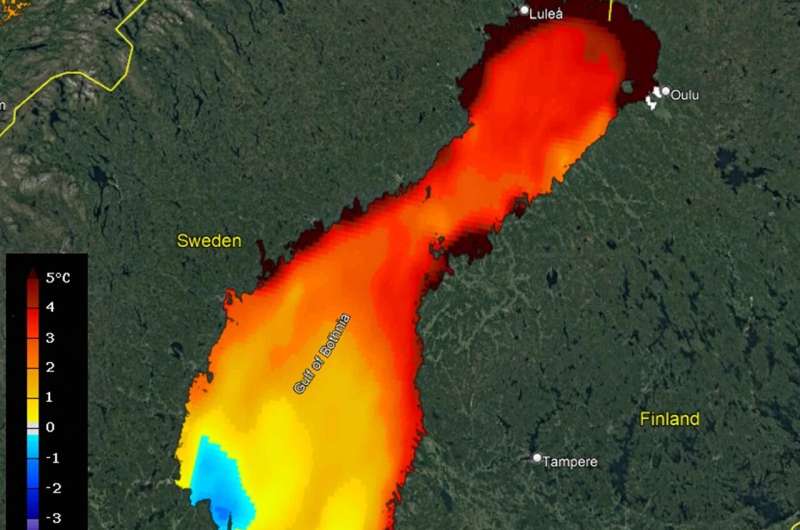This article has been reviewed according to Science X's editorial process and policies. Editors have highlighted the following attributes while ensuring the content's credibility:
fact-checked
trusted source
proofread
Heat wave in the northern Baltic Sea now the longest ever recorded

The heat wave in the northern Baltic Sea in recent weeks is the longest ever recorded. "The unusually high water temperatures are very worrying and can have major consequences for the marine ecosystem in the area," says Nicholas Kamenos, director of Umeå Marine Sciences Center.
Since mid-July, temperatures in the surface waters of the northern Baltic Sea, have been above normal, making it the longest heat wave ever recorded in the area.
This concerns the researchers at Umeå Marine Sciences Center based at Umeå University. After a short period of elevated water temperatures, marine ecosystems often recover. However, a prolonged heat wave that spans weeks, or even months, can have devastating consequences.
"This can be very serious. Persistent warm periods create completely new conditions that the species in the northern Baltic Sea are not adapted to," says Nicholas Kamenos.
For over 20 years, Umeå Marine Sciences Center has performed regular temperature measurements on surface and bottom water in the region. It has been noted that heat waves have become more frequent and that the persistent periods of heat increasingly seem to affect marine life. For example, the heat makes particular bacteria more active which in turn can change the entire bacterial balance in the area.
"For example, during heat waves, increases in bacterial infections in other organisms can be seen," says Nicholas Kamenos.
For the entire Baltic Sea region, sea temperatures have increased by between of 1–1.5 degrees since the 1990s, although it varies somewhat between different areas. The biggest difference can be seen in surface water, but in the southern parts of the Baltic Sea the same trend can also be seen in the bottom water.
One consequence of higher sea temperatures is that marine ecosystem's ability to store carbon dioxide is impaired. "The oceans have helped to store the carbon dioxide that we emit, thus helping to slow down global warming. If rising sea temperatures instead lead to carbon dioxide being released from the oceans, this could have an impact on the rate of climate change," says Nicholas Kamenos.
Provided by Umea University





















